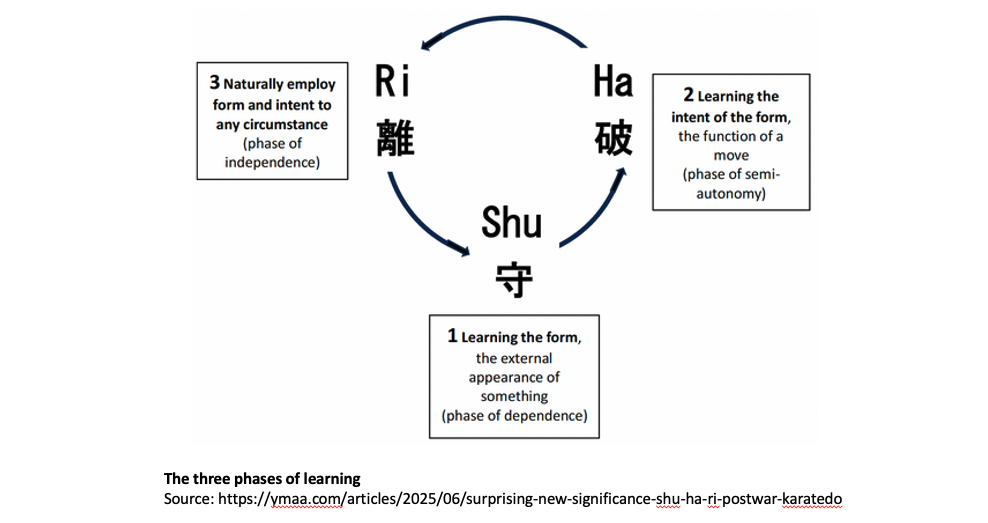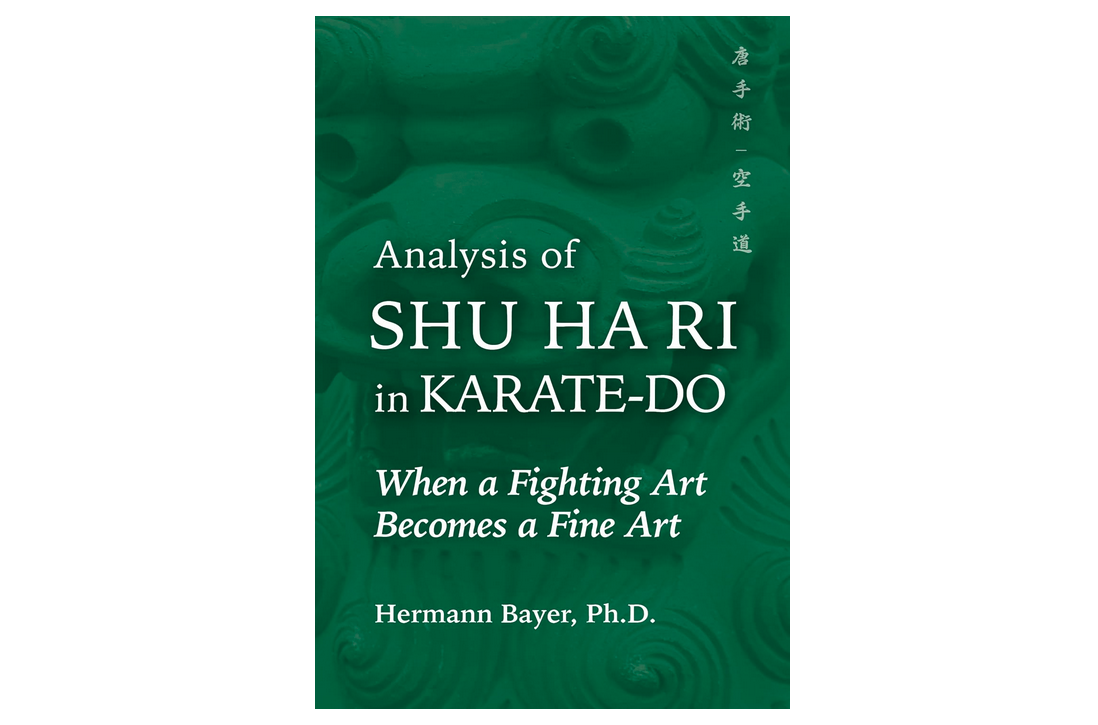Mastering Any Skill, the Japanese Way
📚 A review of Analysis of Shu Ha Ri in Karate-Do: When a Martial Art Becomes a Fine Art by Hermann Bayer, Ph.D.
Most people believe that mastery of a skill comes from practicing harder and longer. ‘10,000 hours of deliberate practice’ has achieved a level of imperative unwarranted by the actual evidence (Epstein, 2021). Yet countless learners, whether in business, the arts, or sport, hit a plateau they can’t break through. The problem isn’t effort. It’s that they’re missing a hidden progression that separates the true experts from the merely experienced.
For centuries, Japanese masters have understood this journey. It has three distinct phases, Shu, Ha, Ri, and each demands a different mindset and approach. Skip one, and your growth stalls. Get them right, and you move beyond imitation into competence and ultimately mastery. Unlike many Western theories of learning, it’s not a linear set of stages to be climbed like the rungs of a ladder: instead it’s a cycle, a spiral of increasing competence where the earliest phase is never forgotten.

Hermann Bayer’s Analysis of Shu Ha Ri in Karate-Do is one of the clearest and most extensive explanations of this progression I’ve encountered. While his examples come from Okinawan karate, his real subject is the universal process of moving from novice to master, potentially in any discipline.
Bayer brings to his writing both deep scholarship and decades of martial arts expertise. This shows, but the book remains reasonably accessible for general readers. He unpacks philosophical ideas without jargon, showing exactly how they play out in practice. One of his most important clarifications is effectively a major theme of the book: Shu Ha Ri is not an Okinawan tradition. Despite its frequent modern association with karate, Bayer shows that the concept comes from Japanese fine arts, especially from the tea ceremony, and only entered karate after karate’s fairly recent introduction to mainland Japan, in 1922. This detail is more than just historical trivia; it changes how you see the concept. Shu Ha Ri is not tied to a single fighting style, and certainly not to karate. It’s potentially a transferable blueprint for mastering any complex skill.
Although Shu Ha Ri has wide applicability and has been adopted in many different disciplines, Bayer does focus heavily on karate, and on its Okinawan origins. This is the author’s specialist field. He is, after all the author of the two-volume Analysis of Genuine Karate, which explores Okinawa as the cradle of true karate. So readers curious about Shu Ha Ri, but with limited interest in karate and Okinawan history may wish for more examples from other disciplines. But the underlying framework is so universal that the author’s examples still work. You don’t need to know a kata from a kumite to apply what you learn.

If you are a practitioner of Karate, I suspect after reading this book you’ll never see it in quite the same way. But what makes the concept of Shu Ha Ri valuable beyond martial arts is its potential application to any field where performance and creativity matter. For instance, writers might see how to move from imitating their influences to developing a unique voice. Leaders might understand when to enforce process and when to encourage innovation. Artists, athletes, and entrepreneurs might recognise the moment to step beyond rules without losing their foundation.
If you care about personal growth and continuous improvement, or want a proven roadmap to mastery, this book will give you both the theory and the practical insight to get there. By the time you finish it, you won’t just understand Shu Ha Ri, you’ll be inspired to integrate this learning philosophy into your own life. And in case you were tempted, you will never again confuse Shu Ha Ri with the historical traditions of Okinawan karate.
Details
Analysis of Shu Ha Ri in Karate-Do: When a Martial Art Becomes a Fine Art by Hermann Bayer, Ph.D. (June 2025, ISBN: 9781594399954)
Purchase directly from the publisher, YMAA.
Resources
- A video interview with the author.
- A summary of the argument, adapted from the introduction: The Surprising New Significance of Shu Ha Ri in Postwar Karatedo.
- A 1983 BBC documentary about Okinawan karate: The Way of the Warrior: Karate, the Way of the Empty Hand. This is extraordinary and a real classic! (mentioned in a footnote on p.97).
I’m the author of Shu Ha Ri: The Japanese Way of Learning, for Artists and Fighters. It’s a short and accessible introduction to the concept, available now.
And if you enjoyed this review, you may like to subscribe to the weekly Writing Slowly email digest.